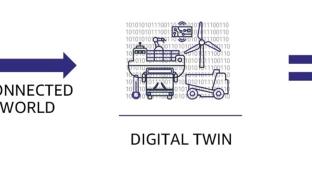Retail Cloud Innovators Series

Innovation Strategies to Accelerate Growth and New Product Development: How AWS Helps Retailers Innovate
Many organizations run into challenges as they try to build a culture of innovation. A recent survey of over 500 business leaders conducted by Harvard Business Review Analytic Services and AWS shows that innovative organizations “aim to solve their customers’ problems first, and that informs how they innovate.” At AWS, we spend a lot of time trying to embed innovation into our daily work. In this blog, we’ll discuss some of the methods we use to innovate at Amazon and AWS. We’ll also cover our service offerings to help customers innovate, and we’ll share examples of innovation success stories.
Amazon Leadership Principles
At Amazon, we hold ourselves and each other accountable for demonstrating 16 Leadership Principles in our daily actions, such as “Customer Obsession,” “Invent and Simplify,” “Learn and Be Curious,” and “Think Big.” These Leadership Principles help guide our business decisions and remind us to keep customers and their needs top of mind as the driving force of our innovation. We teach the Leadership Principles, along with historical examples, to new hires. For instance, an example of thinking big is our Prime two-day delivery, which was an incredible feat back in 2005 when Amazon first offered it. Customers didn’t necessarily ask for two-day shipping, but it certainly became apparent that they wanted it. This anecdotal point is just one example of how we obsess over customers and take bold steps to innovate. At Amazon, approximately 90% of what we build is driven by what customers tell us they want. And for the other 10%, we pay close attention to pain points and create new features and services to surprise and delight customers.
The Six-Page Narrative
Here's another peculiar aspect of the culture at AWS and Amazon: We rarely use PowerPoints for internal presentations. Instead, we use six-page narratives. On the surface that sounds quite strange—and certainly there is an investment in time to prepare this kind of deep narrative. But there’s a reason. The perception of a presentation is often heavily influenced by the presenter instead of the idea itself. Using written words forces the presenter to find facts to support the idea, and it encourages people to focus on the core idea rather than cool graphics and great presentation skills. It also allows the presenter and the audience to engage in a deep discussion that usually includes diverse opinions and respectful challenges to assumptions that help to refine and improve the idea—well before a single line of code is written.
Working Backwards
To help with execution, we create mechanisms that codify actions so they are repeatable. We believe the best mechanisms are self-reinforcing, continuously turn business inputs into valuable outputs for customers, and turn good intentions into actions. An established mechanism is “Working Backwards,” where we start with a customer need and work backwards to a solution. We address key questions that help illuminate the customer and their problem, as well as the needs and benefits of a potential solution. Amazonians across the company wrestle with these straightforward questions as they think about new ideas. They are deceptively simple questions that you could answer in five minutes or spend five months exhaustively researching. Regardless, these questions refine our thinking and approach, and once we’ve answered the questions, we can move to the next step in the process: writing a press release and frequently asked questions (PRFAQ) document. This mechanism is in the DNA of our culture, so every Amazon employee is familiar with it.
We draft a press release, a forward looking one-page document announcing the new product, service, or process using customer-centric language. You’d be surprised how writing a one-page press release cuts through the clutter and yields absolute clarity. If the press release is boring or unclear, there’s more work to be done to refine the idea. Press releases for Kindle, Echo, and Amazon Rekognition were all drafted in the ideation stage, well before the products were actually built. Before we hired a team or put hands on keyboard, the PRFAQs became the living prototype for these new products—the litmus test of customer value and delight.
Net Result: Innovation
The result of our Working Backwards approach is better tools, products, and services that solve customer problems to constantly innovate and drive continuous value to customers. It’s worth noting that customers who move to AWS reduce IT spend on infrastructure, freeing budget for reinvestment in other areas. AWS customers also see significant improvements in other areas, including staff productivity, operational resilience, and business agility. Because the cloud makes it easier to experiment, innovation is more accessible than ever—especially for retailers.
Digital Innovation Program
Since many retailers aren’t sure how to get started, AWS offers programs to help retailers innovate. The AWS Digital Innovation Program is a workshop-style session where our experts help you finetune your idea and outline a path to bring your idea to fruition, pulling from 20+ years of Amazon experience. The program offers a variety of engagement opportunities, including one-on-one conversations about our “Culture of Innovation” and “Learning from Amazon” briefings that explain our approach to innovation that led to robotics, AWS, and Amazon Go.
Digital Innovation Program and Working Backwards Success Stories
The AWS Digital Innovation Program also offers Working Backwards engagements to help companies unlock innovation. Here are several examples of successful engagements:
- AmorePacific—This South Korean beauty and cosmetics company ranks 12th in the world in its category. An Amazon Digital Innovation engagement led to the development of new streams of innovation across the business, including a Beauty Advisor and a Stress Management Service. To learn more, read the case study.
- Ferring Pharmaceuticals—This specialty biopharmaceutical company is committed to helping people build healthy families. A Digital Innovation engagement with a Working Backwards approach helped the company understand the root causes for why couples don’t seek help for fertility issues. The session led to the Fertility House Calls program that has been rolled out across the US. To learn more, read the case study.
- Konica Minolta Precision Medicine (KMPM)—Part of the Konica Minolta Group, KMPM is dedicated to detecting and treating disease. In a Working Backwards engagement, Amazon helped the company re-imagine its LatticeTM initiative, a groundbreaking integrated diagnostic data platform that combines genomics, pathology, and radiology data along with other critical information to uncover new, clinically relevant biomarkers and create the next generation of diagnostic tests. To learn more, read the press release.
- Meliá Hotels International—As the third largest hotel chain in Europe, the AWS Digital Innovation Program helped the company re-imagine the check-in experience in the COVID-19 era. Melia became the first hotel chain in Spain approved to reopen after lock-downs by launching “Face to Go,” a zero-contact check-in process using facial recognition, ID document scanning, and terminals in the hotels that actually recognize the customer upon entry. To learn more, read the case study.
- Superbet—It’s the largest sports-betting operation in Romania offering casino games, live sports, lottery, and more. In a Digital Innovation session following the Working Backwards mechanism, the company focused on the customer perspective and created a loyalty program called Super Club for its retail customers. It’s been so successful, Superbet extended the program to online users as well. To learn more, read the case study.
Other Advisory Programs and Resources
In addition to the AWS Digital Innovation Program, we also offer several other advisory and consulting programs, including:
- Innovation Transformations—Offered by the AWS Professional Services Innovation Advisory team, this program is designed for enterprise companies that want guidance on organizational design, agile development, innovation systems, and talent retention.
- AWS Migration Acceleration Program—This program is ideal for organizations that want to accelerate innovation with new technologies.
- Enterprise strategists—For large retailers that want to accelerate digital transformation, our enterprise strategists, who are former c-level executives from a wide range of industries, can share their expertise and guidance. Phil Le-Brun, former CIO of McDonald’s, is one of our enterprise strategists.
Innovation doesn’t just happen. It needs to be cultivated throughout the organization with mechanisms to support innovative efforts and a willingness to take risks. As you’ll understand from each of the customer successes included in this blog, there are no short-cuts. And with the few examples here, we’ve only scratched the surface to showcase impressive success stories. But as always, AWS is here to help your retail organization innovate. Contact your account team today to get started.






